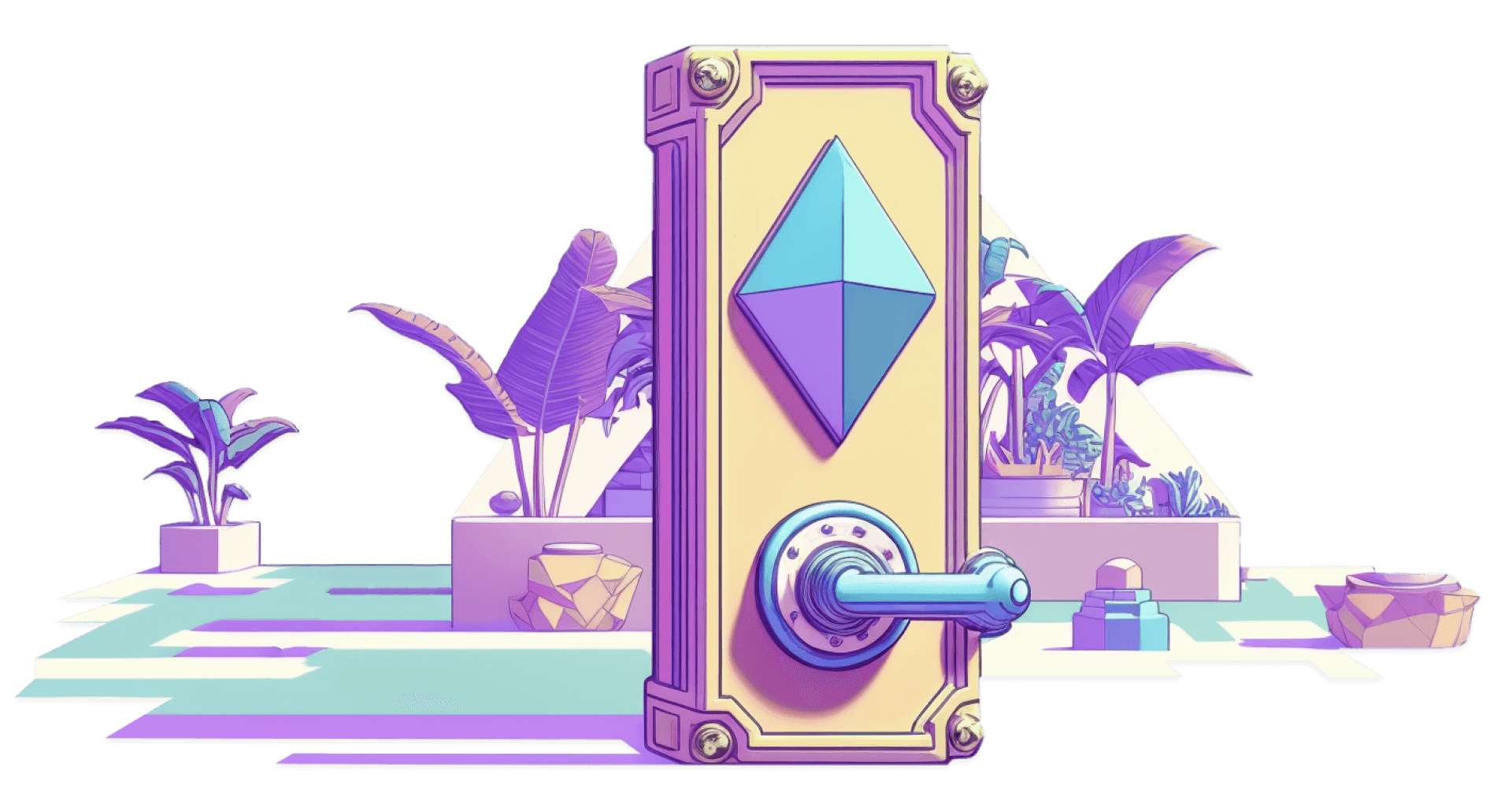Ethereum wallets
Holding the keys to your digital future
Wallets help you access your digital assets and sign in to applications.

What's an Ethereum wallet?
Ethereum wallets are applications that give you control over your account. Just like your physical wallet, it contains everything you need to prove your identity and handle your assets. Your wallet allows you to sign in to applications, read your balance, send transactions and verify your identity.
Wallets are what most people use to handle their digital assets and identity.
Your wallet is a tool for interacting with your Ethereum account. That means you can swap wallet providers at any time. Many wallets also let you manage several Ethereum accounts from one application.
Wallet providers don't have custody of your funds. They just provide you a window to see your assets on Ethereum and tools to easily manage them.
An app for managing your funds
Your wallet shows your balances, transaction history and gives you a way to send/receive funds. Some wallets may offer more.
Your Ethereum account
Your wallet is your window into your Ethereum account – your balance, transaction history and more. But you can swap wallet providers at any time.
Your login for Ethereum apps
Your wallet lets you connect to applications using your Ethereum account. It's like a login you can use across many apps.
Wallets, accounts, keys and addresses
It's worth understanding the differences between some key terms.
An Ethereum account is a pair of keys. is used to create the address you can share freely, and the you need to keep secret because it's used to sign things. Together, these keys let you hold assets and make transactions.
An Ethereum account has an address, like an inbox has an email address. This is used to identify your digital assets.
A wallet is a tool that lets you interact with your account, using your keys. It allows you to view your account balance, send transactions, and more.
Most wallet products will let you generate an Ethereum account. So you don't need one before you download a wallet.
Types of wallets
There are a few ways to interface and interact with your account:
Physical hardware wallets are devices that let you keep your crypto offline – very secure
Mobile applications that make your funds accessible from anywhere
Browser wallets are web applications that let you interact with your account directly in the browser
Browser extension wallets are extensions you download that let you interact with your account and applications through the browser
Desktop applications if you prefer to manage your funds via macOS, Windows or Linux
Interactive tutorial
How to use a wallet
How to stay safe
Financial freedom and the ability to access and use funds anywhere comes with responsibility – there’s no customer support in crypto. You are responsible for keeping your keys safe and secure.
Take responsibility for your own funds
Centralized exchanges will link your wallet to a username and password that you can recover in a traditional way. Just remember you’re trusting that exchange with custody over your funds. If the exchange has financial trouble, your funds would be at risk.
Write down your
Wallets will often give you a seed phrase that you must write down somewhere safe. This is the only way you’ll be able to recover your wallet.
Here's an example:
there aeroplane curve vent formation doge possible product distinct under spirit lamp
Don’t store it on a computer. Write it down and keep it safe.
Bookmark your wallet
If you use a web wallet, bookmark the site to protect yourself against phishing scams.
Triple check everything
Remember transactions can’t be reversed and wallets can’t be easily recovered so take precautions and always be careful.